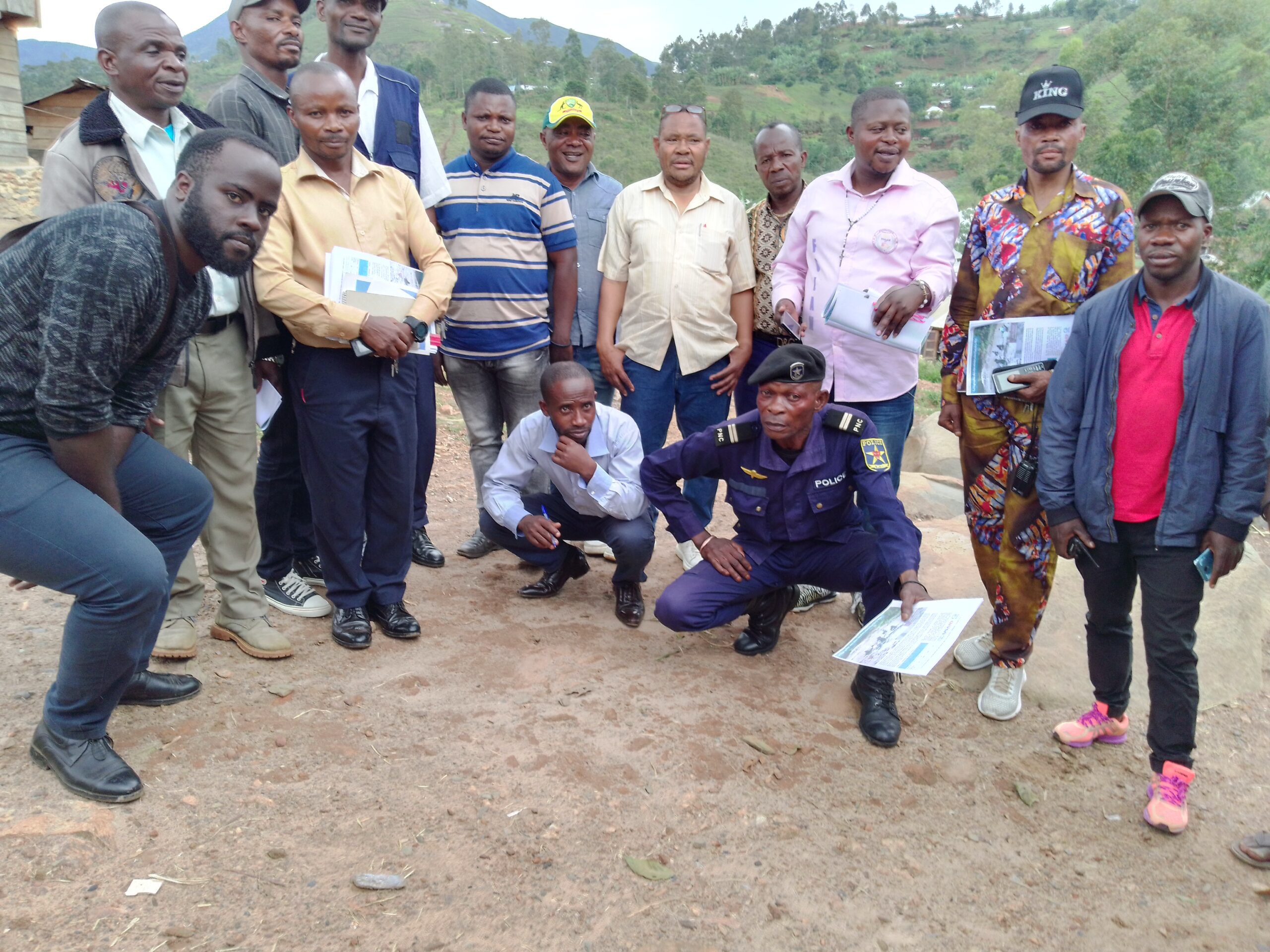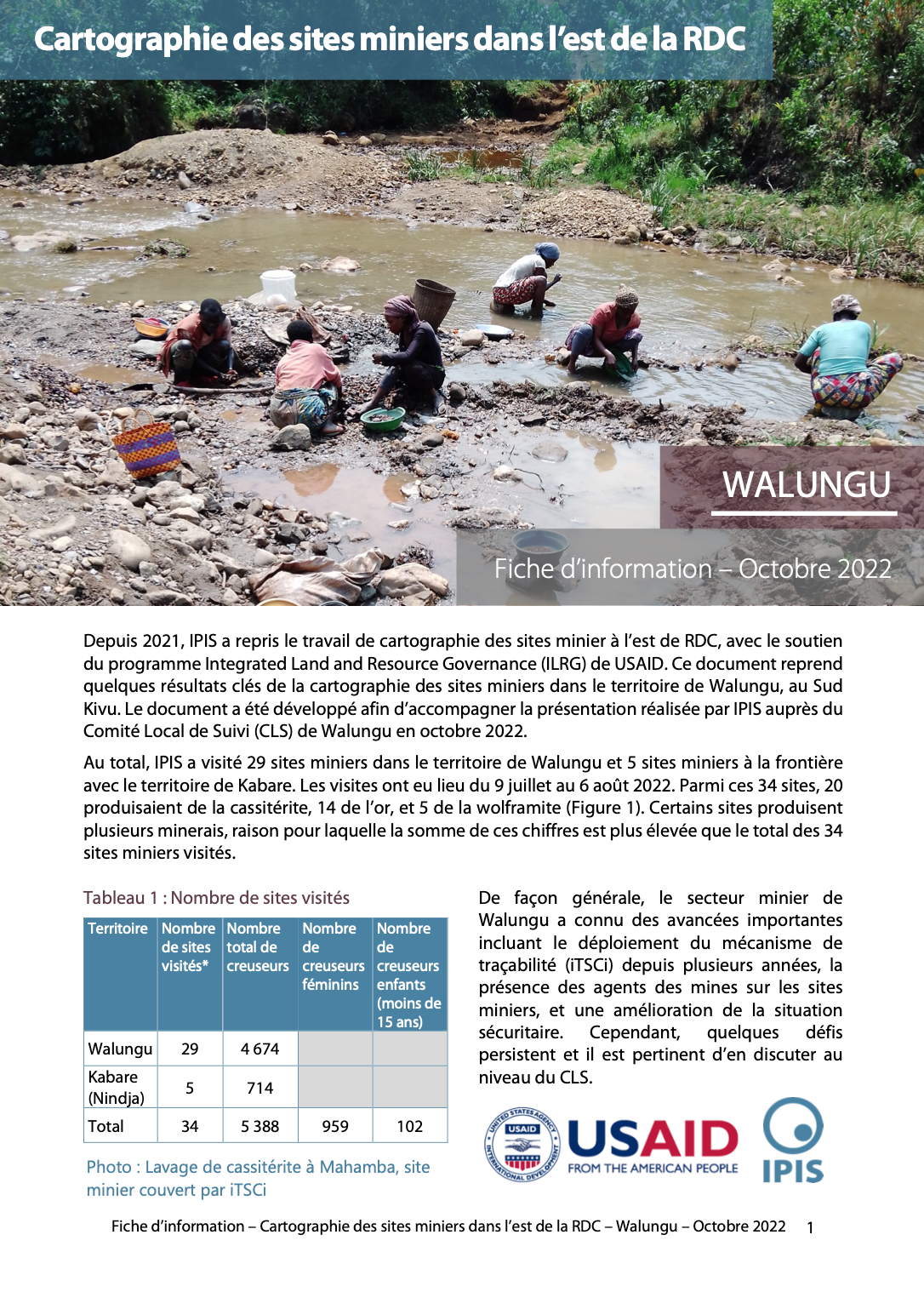Since 2021, IPIS undertakes another large-scale mapping effort of artisanal and small-scale mining (ASM) sites in the eastern Democratic Republic of Congo (DRC), – in partnership with USAID and the Congolese Ministry of Mines (through its technical service SAEMAPE).
The project aims to provide observers, supply chain actors and policymakers with reliable data to understand artisanal mineral supply chains and conflict financing in 7 provinces of eastern DRC (Ituri, Tshopo, Haut-Uele, North and South Kivu, Maniema, and Tanganyika). IPIS increasingly tries to share the results of the surveys directly with Congolese actors along the upstream part of the supply chain, to make the results more accessible and available for them.
As part of this objective, IPIS shares the results of its research with several local multi-stakeholder committees that monitor challenges in the mining sector and try to improve local mining governance, i.e. at the provincial (CPS) and local level (CLS).

A first of these feedback moments was organized in April 2022 in Shabunda territory, South Kivu province.
On October 20, IPIS organized another restitution of the results of the surveys carried out in July and August 2022 in Walungu territory (South Kivu), with the local CLS in Nzibira.
The factsheet below provides more details on the main findings. It discusses among other things the interference of Raïa Mutomboki rebels in some mines in Kabare territory, some army held roadblocks, challenges with regards to the implementation of traceability around Nzibira and Luntukulu, and community concerns around Yellow Water Resources’ semi-industrial exploitation near Luntukulu
During the CLS meeting participants confirmed IPIS’ findings and discussed several issues flagged by IPIS, including:
- The presence of Raïa Mutomboki, commanded by Lukoba, in Kabare territory. Participants urged FARDC to step up its efforts against the group, and confirmed that these minerals ended up in Nzibira’s mineral supply chains;
- Participants especially complained about the roadblock at the entrance of Nzibira;
- The arrival of semi-industrial exploitations created a lot of discussion within the CLS. Yellow Water Resources originally created a lot of interest of several cooperatives and the local chiefdom. Most stakeholders, however, expressed disappointment with the company in the end. There still seems to be a lack of knowledge locally on the company’s legal status;
- Finally, the CLS also discussed and recognized the difficulties that traceability faces around Nzibira. A lot of minerals, from Kabare, Walungu and Shabunda, reportedly continue to arrive in Nzibira without tags, but leave for Bukavu with a tag. It presents a serious risk for the contamination of monitored supply chains, and raises questions on the effectiveness of traceability.

Supported by USAID, Integrated Land and Resource Governance (ILRG) project


